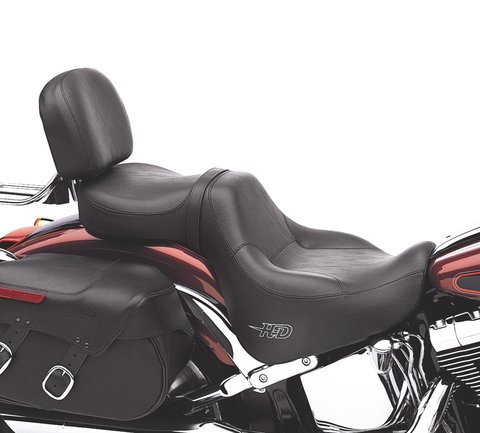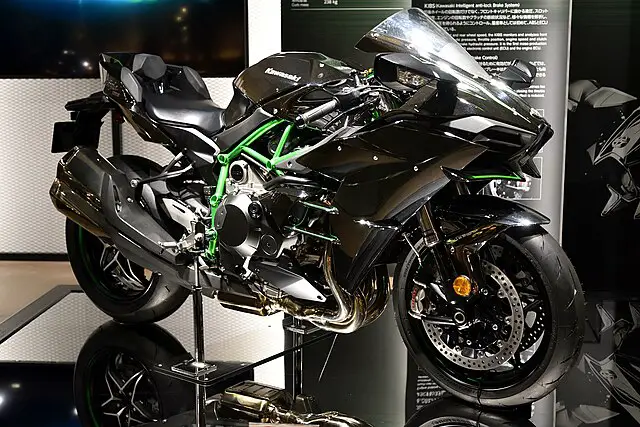Are Motorcycles Automatic or Manual
Motorcycles bring freedom, adventure, and speed! Whether you’re a die-hard biker or just curious about them – it’s important to know the basics. Are they manual or automatic? Let’s explore!
Motorcycles can be either automatic or manual. Automatics uses a CVT system for seamless gear changes – no clutch or manual shifting! This makes them great for beginners or those wanting an easy ride.
Manuals require riders to manually shift gears with their hands and feet. Experienced riders love the thrill of this control.
When choosing a motorcycle, it’s important to go with one that suits your skill level and preferences. If you’re a beginner or want an easy ride, an automatic is a great choice.
But if you crave control over performance and enjoy shifting gears, a manual is right up your alley.
Both types have pros and cons. Automatic bikes are convenient and easy to use but lack performance. Manual motorcycles offer more control but require more skill.
Ready to hit the road? Put on your helmet and get revving – motorcycles are here!
Motorcycles: An Overview
Motorcycles offer a thrilling journey. Power and agility combine to create an exciting ride. They have two wheels, which makes them unique.
These bikes come in different styles, sizes and designs. You can get a sports bike for speed or a cruiser for long-distance rides.
One feature that sets them apart from cars is the transmission. Most cars have automatic transmissions, but motorcycles usually have manual ones.
This means riders shift gears with their feet and hands. It takes skill to shift smoothly and stay balanced.
Technology has made automatic transmissions for motorcycles. These use sensors and electronics to shift without manual input. This is great for beginners and those wanting a more relaxed ride.
Some people think manual transmission is better. It gives more control over acceleration and engine performance. Automatic transmissions make riding simpler, which is good for commuting or leisure.
An inspiring story. Alex went on an epic cross-country ride on his motorcycle. He saw beautiful landscapes, met different cultures and made memories. The freedom and excitement of the ride made it extraordinary.
Motorcycles offer an amazing journey. Not just the destination, but how you get there. That’s what makes it special.
Types of Motorcycle Transmissions
Motorcycles come with different types of transmissions. Knowing the options can help riders pick the right one. Let’s review them.
Two types: automatic and manual.
Automatic: shifts gears automatically. Good for beginners and those who want an effortless experience. Smooth acceleration.
Manual: requires manual shifting. Favored by experienced riders who enjoy precise control and tactile feedback.
Factors to consider when choosing:
- Beginners or riders with mobility issues might prefer automatic.
- If riding in heavy traffic, automatic can provide convenience.
- Manual offers more control & precision.
The choice between automatic & manual ultimately comes down to personal preference. Try both before making a decision, or get advice from experienced riders.
Mastering a manual transmission takes skill, coordination, and a bit of luck!
Understanding Manual Motorcycle Transmissions
Manual motorcycle transmissions can be tricky to understand.
Unlike cars, bikes can have either manual or auto transmissions. Manuals require the rider to change gears with a clutch and gear shift. This allows control over the bike’s speed and power.
It’s essential for motorcycle riders to know how manual transmissions work. Gears transfer power from the engine to the wheels.
By shifting, riders change the ratio between engine and wheel speed, accelerating or decelerating.
A special feature of manual motorbike transmissions is the clutch. It disengages the engine from the transmission, making it easier to shift gears.
By pulling the clutch lever, riders can shift smoothly without damage or jolts.
Nowadays, some motorcycles come with semi-auto transmissions. These combine manual and auto systems. Riders still shift manually but don’t need a clutch lever.
Instead, electronic sensors detect when a gear change is needed and engage/disengage the clutch automatically.
Motorcycle.com says that experienced riders prefer manual transmissions.
They provide more control and engagement with the bike, a more immersive riding experience, and the ability to adjust gear selection for conditions and performance.
Understanding Automatic Motorcycle Transmissions
Automatic motorcycle transmissions are awesome for efficiency, convenience, and adaptability. They optimize gear shifting and simplify the riding process.
Plus, they come with advanced safety features, like ABS and traction control. To make the most of this tech, here’s what to do:
- Get familiar. Read your bike’s manual or ask experienced riders.
- Start slowly. Practice in a quiet area before tackling busier roads.
- Explore modes. Some bikes have different ones for different needs.
You can embrace the convenience and efficiency of an automatic motorcycle transmission. Plus, stay safe on the road. Enjoy a smooth ride and make it your own!
Choosing between Manual and Automatic Motorcycles
Manual and automatic motorcycles both have their pros and cons. Manual ones require manual shifting of gears, giving more control but a steeper learning curve for beginners.
Automatic ones have no need to shift gears, but are usually more expensive and offer less control.
A friend of mine recently shared his experience. He initially went for manual but found it challenging.
So, he switched to automatic and was amazed at how effortless it was. This emphasizes the importance of considering personal preferences and riding style.
No matter which you choose, each offers a unique experience. It’s about finding the right balance and enjoying the ride. So, take your time, weigh the pros and cons, and find the perfect fit!
Conclusion
We have looked at motorcycles – their types, features, and transmissions. Now, let’s answer the question: are motorcycles manual or automatic?
It’s not a simple answer. Many have manual transmissions, requiring gear shifts. But there are also more and more automatic transmission bikes.
Automatic bikes are great for riders who don’t want to shift gears or find it hard. The bike changes gears automatically, based on speed and throttle.
Manual bikes offer a more traditional experience. The rider has to operate the clutch and shift gears with levers and controls. This gives more control and connection to the bike, which many enjoy.
Hondamatic technology first appeared in the 1960s. It was an alternative to manual transmissions. Over time, other companies developed it, leading to the wide range of automatic transmissions available now.
Frequently Asked Questions
1. Are motorcycles automatic or manual?
Motorcycles can be either automatic or manual. Automatic motorcycles have a gear system that shifts automatically, eliminating the need for manual clutch and gear changes. On the other hand, manual motorcycles require the rider to manually shift gears using a clutch and gear lever.
2. What are the advantages of automatic motorcycles?
Automatic motorcycles offer several advantages, especially for beginners or riders who prefer a more convenient riding experience. Some advantages include easier operation, no need for clutch control, smoother gear shifting, and better fuel efficiency in some cases.
3. What are the advantages of manual motorcycles?
Manual motorcycles provide a more engaging riding experience for experienced riders. They allow for better control over gear selection, particularly in challenging road conditions. Manual motorcycles also offer more power and acceleration compared to some automatic models.
4. Can you convert a manual motorcycle to automatic?
Generally, it is not possible to convert a manual motorcycle to an automatic one. The internal components and systems of automatic and manual motorcycles differ significantly, making it impractical to convert one into the other. It is advisable to choose a motorcycle with your desired transmission type from the beginning.
5. Are most motorcycles on the market manual or automatic?
While manual motorcycles have been traditionally more common, the market now offers a wider range of both manual and automatic motorcycles. The availability of automatic motorcycles has increased in recent years as manufacturers aim to cater to various riding preferences and make motorcycling more accessible to a broader audience.
6. Which type of transmission is better for a beginner rider?
For beginner riders, automatic motorcycles are generally considered easier to learn and operate. The absence of clutch control and gear changing simplifies the learning process and allows beginners to focus on essential riding skills, such as balance and road awareness. However, it ultimately depends on personal preference, so trying out both types is recommended before making a decision.





